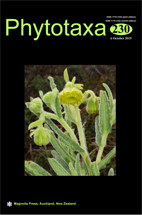Abstract
Recent traditional and molecular systematic studies of the violet family, Violaceae, have confirmed extensive polyphyly of the genus Hybanthus and substantial polyphyly in Rinorea as well. Phylogenetic analyses have proposed up to nine distinct hybanthoid clades. Broad studies of representative taxa within each clade have revealed coherent suites of macromorphological traits in foliage, flowers, fruits and seeds that easily discriminate the nine hybanthoid lineages from each other and from currently recognized genera in the family. Base chromosome numbers and biogeography also provide additional support for recognition of the hybanthoid clades as distinct segregate genera. Some hybanthoid clades have available older generic names, but one of the two Old World lineages, namely the Hybanthus enneaspermus group, is presently nameless. This clade, distinctive in its ellipsoid, pale yellow, often foveolate seeds, is the most diverse in the Paleotropics, with approximately 25 species distributed across Africa, Madagascar, southern Asia, northern Australia and the southwestern Pacific. The group is segregated here as Afrohybanthus gen. nov., with new combinations provided for existing names, all of which have thus far proven morphologically distinct and worthy of recognition at the rank of species. Imminent future studies will describe additional taxa in the new genus.

